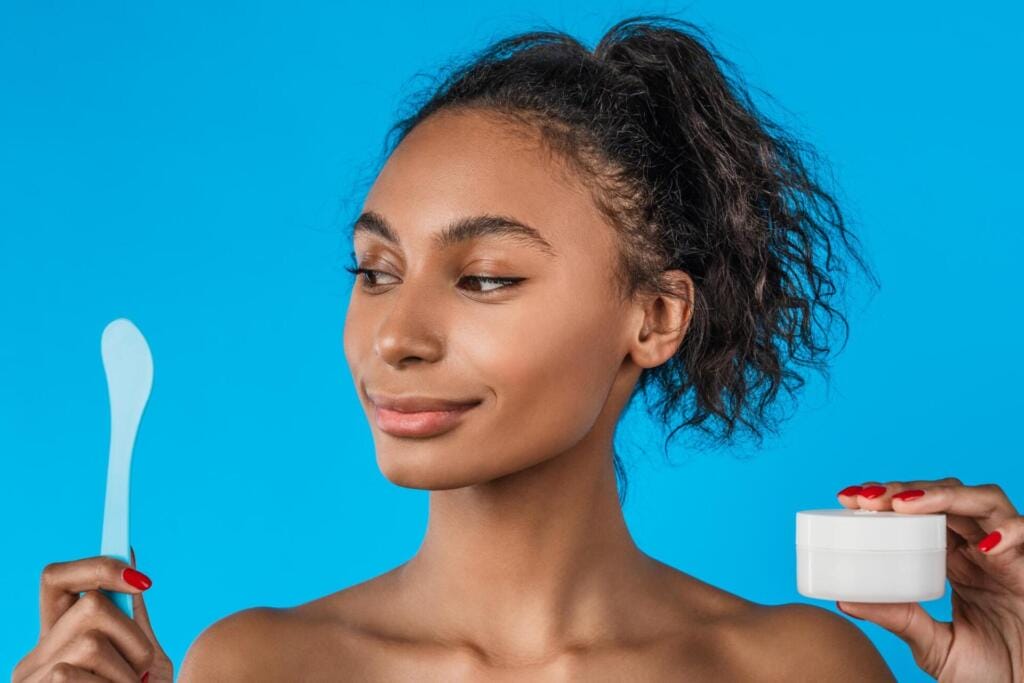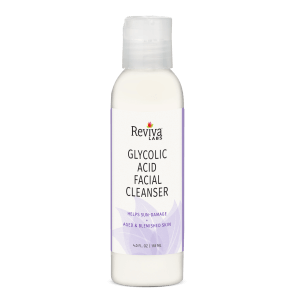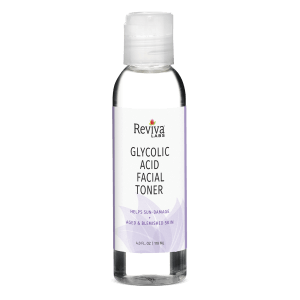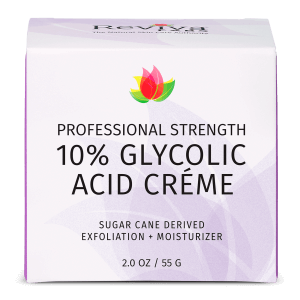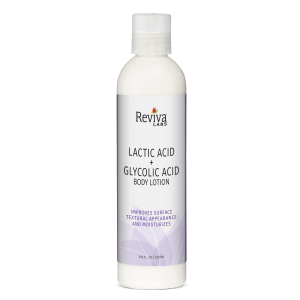Ingredients, Reviva Labs, Skin Care
What Exactly Is Glycolic Acid
Seeing glycolic acid on a product label may sound a little intimidating, but trust me, it’s one of those ingredients you want to have in your skincare products. Whether you’re looking to brighten up dull skin, improve texture, or even smooth out fine lines, glycolic acid might just be the missing link in your quest for flawless skin.
What Exactly Is Glycolic Acid?
Glycolic acid is part of a group of exfoliating acids known as alpha hydroxy acids (AHAs). Found naturally in sources like sugarcane, glycolic acid is the smallest AHA in molecular size. This tiny molecular structure allows it to penetrate deeply into the skin, making it incredibly effective. It is also very gentle on the skin, capable of delivering results without the aggressive side effects. Interestingly, it’s one of the most researched and recommended exfoliants on the market.
How it Works
Dead skin cells that can leave your skin looking dull or uneven. Glycolic acid goes to work on the dead skin cells by breaking down the bonds that hold the dead cells together on the surface of your skin. Glycolic acid encourages fresh, new skin to come to the surface, providing a brighter complexion, smoother texture, and even minimized pores.
But the benefits don’t stop there. Glycolic acid also boosts collagen production. Collagen, that all-important protein responsible for keeping your skin plump and youthful, but diminishes as we age. By encouraging collagen production, glycolic acid helps reduce the appearance of fine lines and wrinkles, giving skin a firmer, smoother look.
Why Glycolic Acid Is Great for All Skin Types (But Especially These)
Although glycolic acid works well for most skin types, it’s particularly beneficial for those dealing with specific issues. If you have oily skin, congested pores, or mild acne, glycolic acid can be a game-changer. The exfoliating action helps to keep pores clear and minimize the risk of breakouts. Plus, if your skin has that dreaded “shiny” look from excess oil, glycolic acid helps balance things out, leaving a more refined appearance.
For those with dry or aging skin, glycolic acid can be equally transformative. Its deep exfoliating properties allow moisturizers and serums to penetrate better, making your skincare routine more effective. The result? Softer, more hydrated skin with fewer visible signs of aging.
Glycolic Acid and Sensitive Skin: Proceed with Caution
Now, if you have sensitive skin, you might be wondering if glycolic acid would be too harsh for you. Well, the answer is a bit nuanced. While glycolic acid is generally safe, it can cause irritation for those with sensitive or reactive skin, especially when used in high concentrations. But don’t worry! There are plenty of lower-concentration glycolic acid products out there designed for more delicate skin types. The key is to start slow. Introduce it gradually into your routine, perhaps just once or twice a week, and always follow with a gentle moisturizer to soothe any potential irritation.
The Many Benefits of Glycolic Acid
Here’s what you can expect from regular glycolic acid use.
- Smoothes Skin Texture: Rough patches, dry spots, and uneven skin are no match for glycolic acid. By shedding dead skin cells, this acid reveals the smoother skin beneath, giving you a more refined texture.
- Boosts Radiance: One of glycolic acid’s most sought-after benefits is its ability to brighten the complexion. Dull skin, often caused by environmental factors and the natural aging process, can make you look tired and worn out. Glycolic acid helps restore that lit-from-within glow.
- Reduces Fine Lines and Wrinkles: This acid doesn’t just work on the surface – it penetrates deep into the skin to stimulate collagen production. Over time, this leads to firmer skin and a reduction in the appearance of fine lines and wrinkles.
- Clears Pores: Glycolic acid’s ability to unclog pores makes it an excellent choice for those dealing with breakouts and blackheads. Clean pores mean fewer chances for acne to develop.
- Evens Skin Tone: If you’ve dealt with hyperpigmentation or acne scars, glycolic acid can help fade those dark spots, creating a more even, uniform skin tone
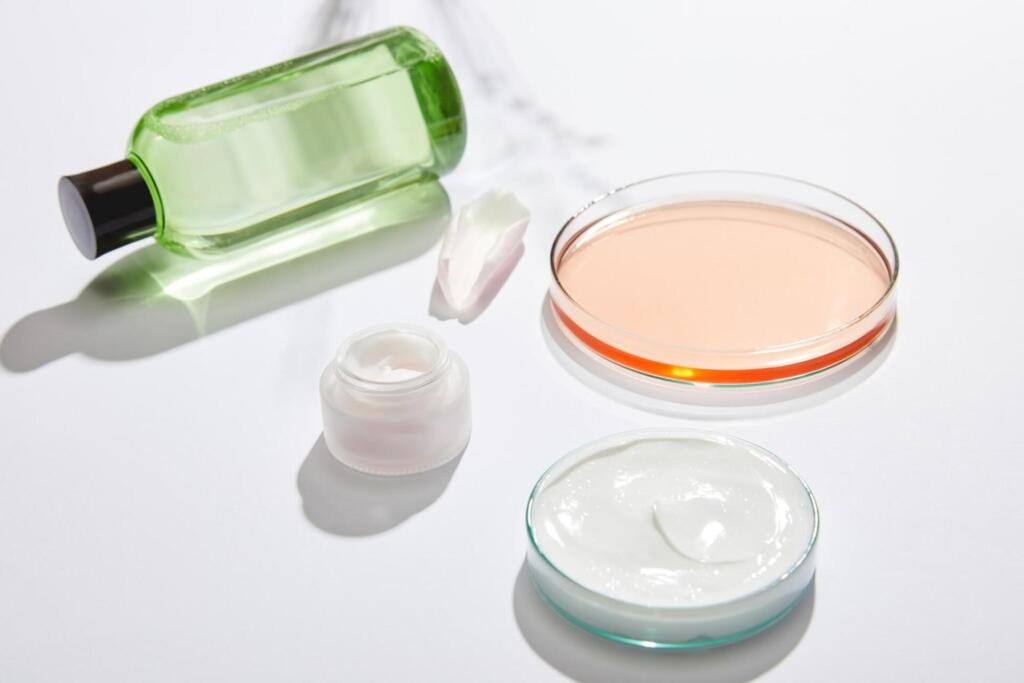
Is There Science to Back This Up?
Absolutely! A study published in the Journal of Cosmetic Dermatology found that glycolic acid can significantly improve the appearance of skin affected by photodamage, such as fine lines and dark spots. The research revealed that with regular use, participants experienced a visible reduction in wrinkles and smoother skin overall. If that doesn’t convince you to try it, what will?
Incorporating Glycolic Acid Into Your Routine
If you’re new to glycolic acid, knowing where it fits into your routine is essential. It typically comes in various forms: cleansers, toners, masks, and serums. For beginners, a toner or serum might be the best option, as they allow the acid to sit on the skin and work its exfoliating magic over time. Always apply glycolic acid to clean, dry skin, and be sure to follow up with a sunscreen during the day – this is crucial! Since glycolic acid removes dead skin cells and exposes new ones, your skin will be more sensitive to UV rays, making sun protection an absolute must.
Start with a lower concentration of around 5-10%, and as your skin builds tolerance, you can gradually move up to higher concentrations if needed. And here’s the beauty of glycolic acid: consistency is key. With regular use, you’ll begin to see noticeable improvements in texture, brightness, and overall clarity.
Other Skincare Ingredients That Pair Well with Glycolic Acid
Wondering how glycolic acid fits into the rest of your skincare lineup? Luckily, it plays well with others. Ingredients like hyaluronic acid, vitamin C, and niacinamide can all work synergistically with glycolic acid to target multiple skin concerns at once.
- Hyaluronic Acid: This ultra-hydrating ingredient pairs beautifully with glycolic acid. Since glycolic acid exfoliates and reveals fresh skin, hyaluronic acid can then penetrate deeper to deliver hydration, leaving skin plump and smooth.
- Vitamin C: Both glycolic acid and vitamin C work wonders for brightening the skin. Together, they can help fade hyperpigmentation and promote an overall more radiant complexion.
- Niacinamide: Known for its anti-inflammatory properties, niacinamide can help calm the skin after glycolic acid exfoliation. This combination is perfect for those who want to exfoliate while keeping irritation at bay.
The bottom line is that glycolic acid is more than just another skincare trend—it’s a tried-and-true ingredient that has been proven to work wonders for a variety of skin types. Whether you’re looking to brighten up your complexion, smooth out fine lines, or just maintain healthy, radiant skin, incorporating glycolic acid into your routine can provide visible, long-lasting results.

